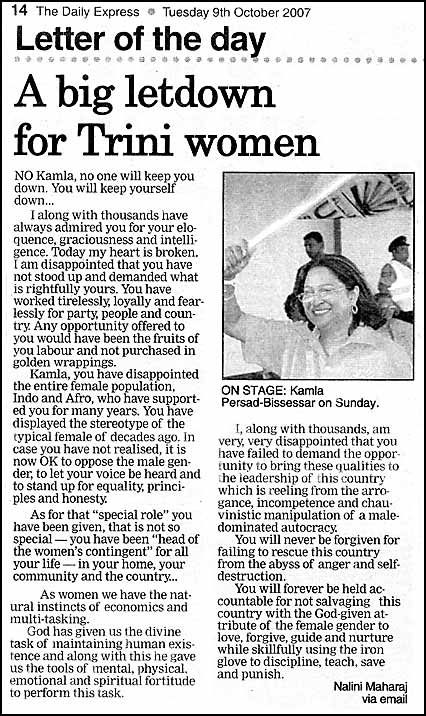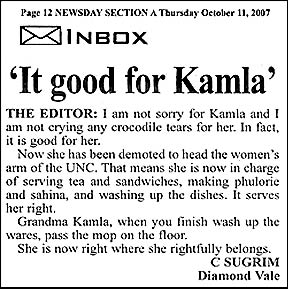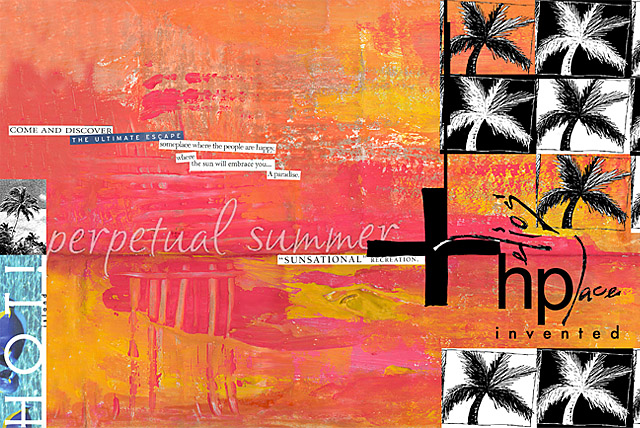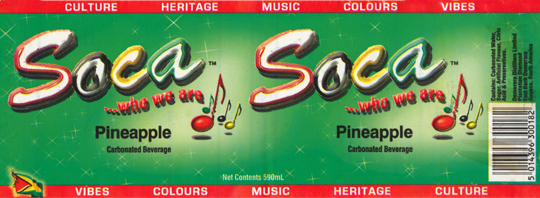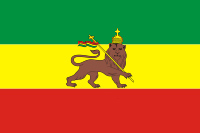1. Global Reggae: Jamaican Popular Music A Yard and AbroadThe University of the West Indies, Mona, Jamaica
February 18–24, 2008
This conference, to be held at the University of the West Indies, Mona, Jamaica and other venues on the island, is the third in a series focusing on Caribbean culture. The first, held in 1996, honoured the distinguished legacy of Professor the Hon. Rex Nettleford, Vice-Chancellor Emeritus of the University of the West Indies. The second, held in 2002, celebrated the work of the Barbadian griot/historian, Professor Kamau Brathwaite. This third conference, to be held in association with the Recording Industry Association of Jamaica (RIAJam), the Jamaica Cultural Development Commission, the Bob Marley Foundation, and the Jamaica Tourist Board, pays tribute to the generations of musicians who have created reggae – Jamaica’s distinctive contribution to world culture. These icons include: Count Matchuki, Don Drummond, Lee “Scratch” Perry, Count Ossie, Mrs. Sonia Pottinger and Prince Buster. The Global Reggae 2008 conference will provide an opportunity for musicians, scholars, cultural practitioners and entrepreneurs from Jamaica and around the world to share their perspectives on the ways in which reggae has been appropriated and adapted in a variety of cultural contexts. This international conference will also examine the local impact of the reggae music industry in Jamaica and assess ways in which the Jamaican economy can benefit through the development and encouragement of internationally competitive local music enterprises. The proposed conference sub-themes include: The Roots of Jamaican Popular Culture (Revival, Mento, Nyabinghi, Jazz, Jump Blues); The Rise of Jamaican Popular Music; Reggae’s Influence on Global Popular Music (Hip Hop, Reggaeton, Jawaiian, Techno, Trip-Hop, Jungle, Soca); The Technological Transformations of Reggae; The Bob Marley Phenomenon; Reggae’s Social and Political Contestations.
For more information email: globalreggae2008@uwimona.edu.jm
Deadline for abstracts is October 12, 2007
Deadline for final papers is December 28, 2007
2. The Synthetic Aesthetics of New Media ArtPresented by The New Media Caucus in Association with the College Art Association
February 20–23, 2008, Dallas, TX
Contrary to traditional aesthetic theories that argue for the primacy of either the subjective and phenomenological, or formal and objective interpretations of artwork, the aesthetics of electronic media, like the logic of technical media itself, is thoroughly removed from anthropomorphic sensibility. One could say that electronic media aesthetics are marked by technical trauma.
However, much contemporary new media art criticism exemplifies a hermeneutic approach that seeks to rationalize and transform work into intelligible "art objects" for canonization and social theories. Is this approach problematic for the logic of technical media? Can certain attributes such as color, form, affect, or sound, effectively reconcile computer based artwork with the subjective and humanistic drives in art making?
The panel invites papers that address the aesthetics of New Media art in distinction to previous aesthetic models or media platforms. For instance, papers suggesting the ways in which color, sound, line, form, symbolism, affect, anti-aesthetics, or ideology may be distinct to new media aesthetics are all welcomed. Essentially the panel inquires: what do aestheticians address in New Media art, and why? Which artists and / or commercial work do you think best exemplifies these issues? Special attention will be given to those abstracts that are concerned with the use of color in New Media work.
Deadline for the receipt of abstracts is October 1, 2007.
Send abstracts to Carolyn Kane: clk267@nyu.edu
3. Virtual CaribbeansPresented by The Cuban and Caribbean Studies Institute at Tulane University in conjunction with the Stone Center for Latin American Studies
February 27–March 1, 2008, New Orleans Louisiana
The definition of the Caribbean as primarily a geographical region is no longer viable. Through the movement of its peoples, cultures, and languages, we also make or find the “Caribbean” elsewhere. It has become an imagined community beyond geographic contours, while simultaneously retaining an immediate materiality that impacts the everyday experiences of Caribbean (and non-Caribbean) subjects. This conference will offer a space for the exploration of manifestations across various media, technologies and performances. Due to a unique history that features French, Spanish, African, Canadian, and other immigrant influences, as well as a legacy of traffic in peoples, cultures, dialects, and products from the West Indies and the circum-Caribbean, New Orleans provides an ideal site for these explorations. Topics for consideration include: Configurations of the Caribbean in Cyberspace; Filmic and other visual Caribbeans; Listening to the Caribbean; Portable Caribbeans; Tangible sites of Caribbeanness created through migrations and diaspora communities.
Deadline for abstracts is November 15, 2007
Email: nporto@tulane.edu
4. Console-ing Passions: A Conference on Television, Audio, Video, New Media and FeminismUniversity of California Santa Barbara
April 24-26, 2008
Topics for consideration include: Gender, media and presidential politics; History and Theory of Television; Women, race and the Don Imus Effect; Feminism and the Blogosphere; YouTube and Social Networking; Women in Media Industries; Reality TV; Media and gay/lesbian politics; Second Life, Gaming and Virtual Reality Online; Religion and Media; Gender Media and Globalization
Deadline for receipt of proposals is November 1, 2007
Visit:
http://www.filmandmedia.ucsb.edu/cptv/cptv.html5. The Caribbean: Embracing the Diasporas Within and WithoutSan Andres Island, Colombia
May 26-30, 2008
The Caribbean Studies Association invites papers on all aspects of the Caribbean and its diasporas, whether the focus is on those that fall within the region, or those more traditionally constituted in the large metropolitan centers of non-Caribbean countries. The idea is to interrogate the historical and contemporary processes of migration (whether forced or voluntary) to the region, and later away from it, with a view to celebrating the Caribbean zeitgeist, and highlighting the role played by the diaspora both in spreading the culture and idea of the Caribbean abroad (second, third and later generations of migrants away from the region) and in nourishing political, economic, literary and cultural expression back in the homeland or home region. In all of this the links among geography, history, society and identity are central.
Deadline for receipt of proposals is December 12, 2007
Visit:
http://www.caribbean-studies.org/ACCSA2008/en/call.html6. Subjectivity: International Conference in Critical Psychology, Cultural Studies and Social TheorySchool of Social Sciences, Cardiff University, UK
June 27-29, 2008
This conference explores shifting conceptualisations of subjectivity in contemporary culture, politics, social science and theory. Although subjectivity is a key analytic term in fields as diverse as critical psychology, postcolonial studies, film theory, gender studies, social theory, geography, anthropology and cultural studies, it is rarely discussed in its own right. The conference attempts to explore subjectivity as a locus of social change, to rethink possibilities for everyday social interventions, to explore how subjectivities are produced and how emerging subjectivities remake our social worlds. Proposals are invited for papers and symposia whose scope falls within or between one of the following areas: 1) Embodiment, Affect, Materiality; 2) New Political Subjectivities/New Social Movements; 3) Redistributing the Psychological
Deadline for receipt of 200-word proposal is January 31, 2008
Email: subjectivity@cardiff.ac.uk
7. Of Sacred Crossroads: International Crossroads in Cultural Studies 2008University of the West Indies, Jamaica
July 3-7, 2008
The Caribbean could well be regarded as one of the first crossroads of the modern era, where Africa and Asia met Europe on Amerindian soil. The conditions were a forced and bitter crucible. The results of that encounter contributed not only to the making of the modern western world but also to the dynamism that is central to all the cultures of the Western Hemisphere. Contemporary emphasis on materialism and consumerism as measures of our humanity, arising from the unbridled excesses to which science and technology have been sometimes put, is of growing concern, putting under duress the intangibles embodied in the values by which we live as human beings. Out of these concerns has sprung deepening dialogue at the interface between science and spirituality. UNESCO’s celebration of the intangible heritage of humankind is a timely reminder that civilizations rise not only on great edifices, monuments and artefacts that defy time, but also on those moments of ‘livity’, or human relationships, that last only as long as they are lived, without which human life would have little meaning. Of Sacred Crossroads captures many of these concerns in a manner that allows for the broadest of interpretation and accommodation across disciplines and forms.
Areas of interest include: Identity and Difference; Media; Gender and Sexuality; Popular Culture; Cultural Industries; Youth Culture; The City; Politics of Opposition; Centre and Periphery
Deadline for receipt of abstracts is November 30, 2007
Visit:
www.crossroads2008.orgLabels: Conferences
